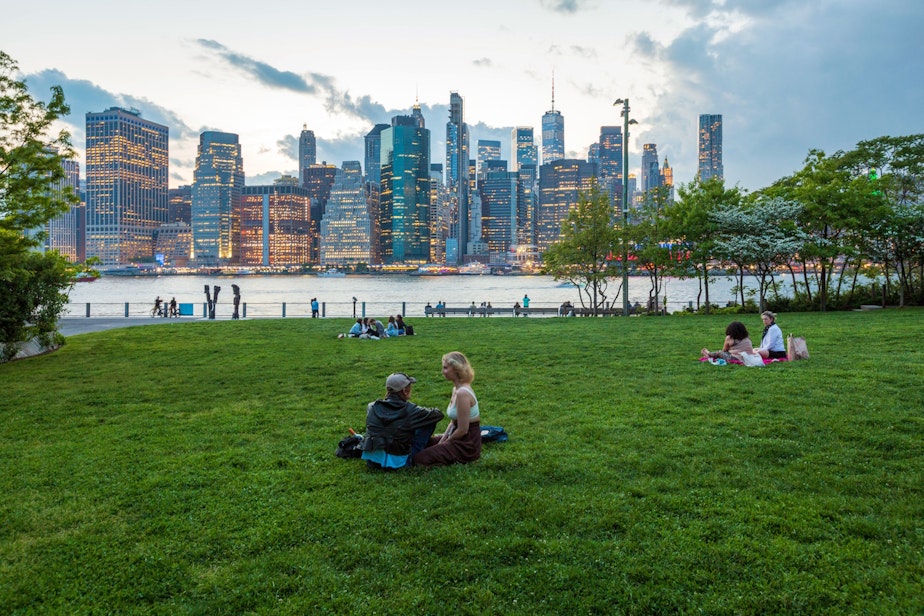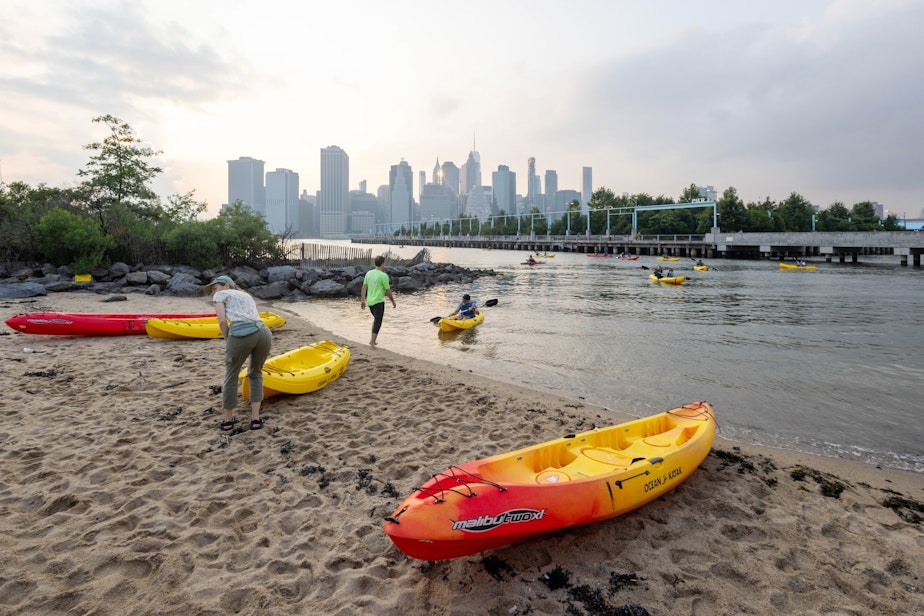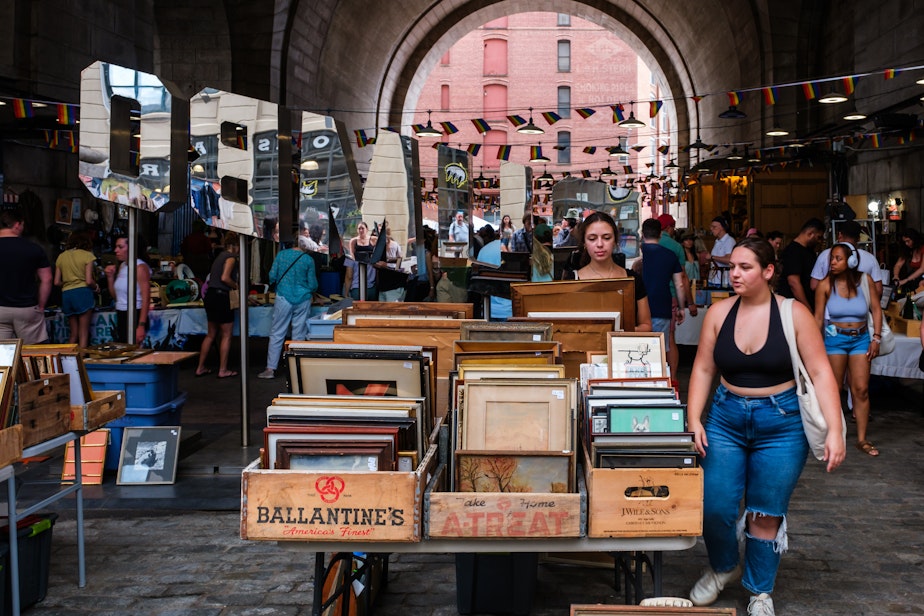For Seattle waterfront's future, look to Brooklyn, New York City

Can Seattle’s redesigned waterfront help revive its downtown?
For an answer, we look to another place that has a lot in common with Seattle: Brooklyn, New York City.
Stand on the waterfront near downtown Seattle and try to imagine how precarious it was back in 2011. The seawall holding the waterfront up was crumbling (marine bugs were eating the pilings) and the noisy, elevated highway called the Alaskan Way Viaduct was in danger of collapse.
The city decided to turn a potential disaster into a chance to dream big. If it was going to have to rip up the seawall and tear down the viaduct anyway, it might as well begin planning redevelopment of its waterfront into a major park.
Today, the park is almost done. And with so many office buildings vacant, leaders hope the waterfront project also could help revive downtown Seattle.

In some places, downtown Seattle is separated from the waterfront by an arduous hill climb. Ceri Thomas from Wales stands at the west edge of the Pike Place Market, trying to figure out how to get down to the waterfront, a hundred feet below.
Sponsored
“From here it looks a little tricky," she says. "I’ve seen people on that bridge over there … I’m assuming we can’t go through the construction site.”
Many downtowns face this same problem of having a waterfront that is physically and mentally separated from the downtown core. Waterfronts have historically been places of industry; later, they became places for major highways, as those are cheaper to build on flat land. When cities deindustrialized, or moved shipping to places like Seattle's Harbor Island, planners began scheming ways to reconnect their downtowns to waterfronts, rebranding them as places to celebrate.
This trend has been amplified by cities’ aim to attract more residents to make up for lost office workers. Prospective residents expect access to outdoor spaces for leisure activities.
Seattle can learn a lot from Brooklyn, New York City, which is several years further along on this journey. Like Seattle’s, Brooklyn’s downtown is a lot higher than its waterfront.
“A major challenge of thinking how to activate the park was, how do you actually get people down the bluff and into the park?” says Candace Damon, an partner with HR&A Advisors. She worked on Brooklyn Bridge Park, but also on many other waterfront projects, including Seattle.
Sponsored
She says Brooklyn built a zig-zagging pedestrian bridge that brings people down the hillside. Seattle is also building a zig-zagging path from the Pike Place Market to the waterfront. You can’t walk the whole thing yet – but it’s already popular with visitors, like Anthony Fajardo.
“Well, we were just talking about it, wondering what it was gonna be," he says, gesturing to the Overlook Walk, which teems with construction workers. "I think that’s gonna look very beautiful, especially being right outside of the marketplace. I think it’ll add a lot."

For Brooklyn’s part, Candace Damon says the city of New York took a bunch of land and several piers, mostly used for coffee storage, and turned them into a 70-acre, linear waterfront park with views of Manhattan and the Statue of Liberty.
“Investment in Brooklyn Bridge Park, was in many ways, one of several catalytic moves to try and strengthen Brooklyn downtown, but the one that…I think in many ways succeeded,” she says.
Sponsored
When she describes the Brooklyn Bridge Park, she could almost be describing Seattle’s.
“Each pier has its own program," she says. "So if you enter from the southern end, you're on a pier that is about beach landscape, beach volleyball, and it's a ferry terminal.”

Other piers feature body-building, basketball, and barbecue pits.
“There is a habitat restoration with riprap and birds, and day camps with kids learning about nature,” Damon adds.
Sponsored
She says the Brooklyn Bridge Park helped the borough’s downtown, but also inspired major investments in a closer neighborhood, down under the Manhattan Bridge overpass. People call this neighborhood by its acronym, Dumbo (Down Under the Manhattan Bridge Overpass).
“Which is one of the most important tech centers in America. It’s New York City’s tech center,” Damon says.
Dumbo’s full of old warehouses. It’s also lower, so you don’t have to climb a big bluff to get there.
“As the park was in its planning phases, the owners of most of that real estate began experimenting with moving artists and other residents into some of those buildings," Damon says. "As the park got built — and established that it was really creating real estate value — the pace of conversion to residential picked up and they found that they were beginning to be able to rent those spaces to tech firms.”

Sponsored
Etsy and West Elm are both headquartered there. Damon expects to see a similar pattern play out in Seattle.
“We saw $2 billion of investment in residential real estate before the viaduct was even down. And now you're starting to see some commercial uses, especially at the southern end of the site, more towards Pioneer Square, that are really interesting,” she says.
Pioneer Square is probably Seattle’s neighborhood most like Dumbo. It has old buildings, art galleries, and easy access to the waterfront — and it’s already been discovered by tech companies.
Of course, every city is different, so Brooklyn's example is not a crystal ball. But of all the waterfront projects Candace Damon has worked on, she says New York City's Brooklyn borough offers the closest comparison to Seattle.




